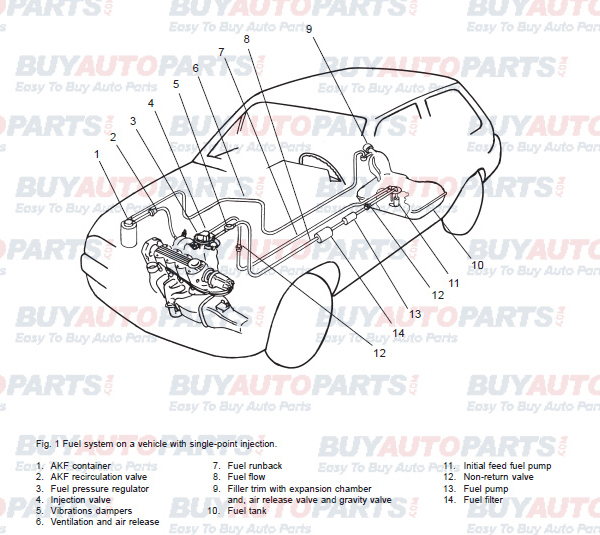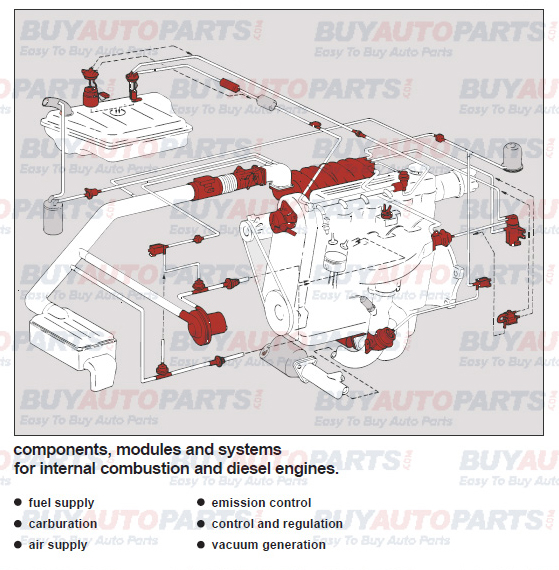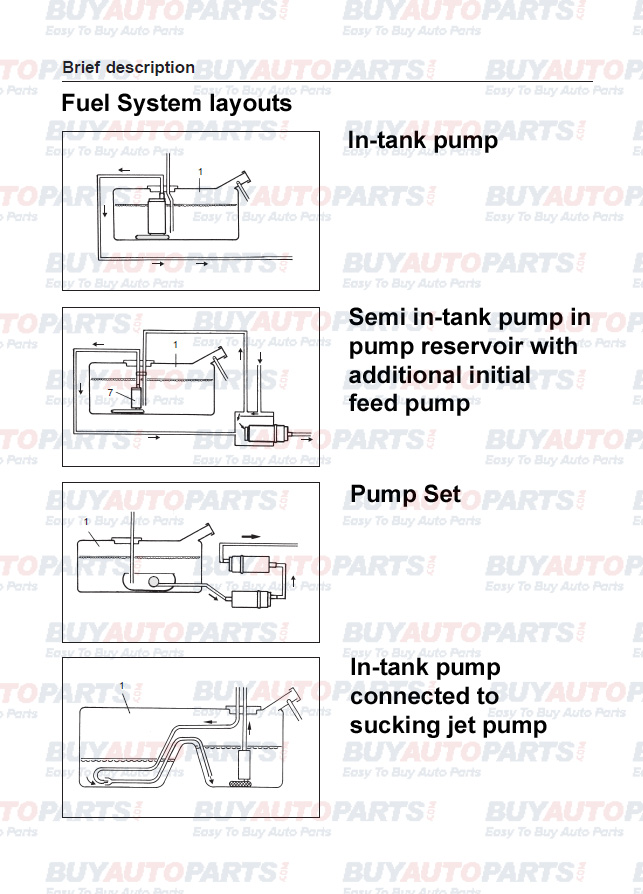Introduction:
Internal combustion engines require fuel in order to run and motor vehicles are thus equipped with a fuel system that keeps the engine supplied with the correct amount of fuel, for all operating circumstances.
Components of Fuel System:

The main components of the fuel system include fuel tank, pump, filter and injector/carburetor.
Fuel Tank: It acts as the reservoir for the vehicle's fuel. The tank has an electronic "trigger" that conveys information concerning the amount of fuel to the gas gauge.
Fuel Pump: Its primary function is to draw fuel from the fuel tank and pump it into the internal combustion engine. There are two kinds of fuel pumps: mechanical and electric, which are used in vehicles with carburetors and electronic fuel injectors, respectively.
Fuel Filter: It is fixed in both the ends of the fuel pumps to separate impurities from the fuel, thereby ensuring optimal engine performance.
Fuel Injector: It is an electronic valve that opens/closes at regular intervals to deliver the right amount of fuel to the engine.
Carburetor: Its main purpose is to mix the right amount of air and fuel and deliver it to the engine. The carburetor is the predecessor of the fuel injector.
Engine Components Related to Fuel System Control:
The fuel system of any car is not a standalone part, there are lots of electronic and mechanical parts on a modern motor that work along with the fuel pump. Systems such as the air sensor and emission control system, work along with the fuel system to properly control the fuel supply to the motor. The components of an automobile's engine related to the fuel system control are shown in the figure below:

Layouts:
There are different fuel system layouts for many different fuel system configurations: In-tank pump, Semi in-tank, Pump set or in-tank pump connected to sucking jet pump.

Fuel Gauge Problem Diagnosis:
This process can be applied to all recent GM cars except those with computerized gauges.
1) Locate the fuel sender feed wire near the fuel tank. You're looking for a single tan colored wire. With the tan wire disconnected at the fuel tank, the fuel gauge should read past full with the ignition on. Wait a few moments as some fuel gauges take a long time to respond. Touch the tan wire from the body to any convenient ground and the gauge should read empty. If not, you have a wiring problem or a bad gauge.
2) If the gauge responds correctly, the gauge and wiring are OK. Next use a multi-meter to measure resistance to the ground of the sender wire connection on the fuel sender, located on the top of the fuel tank. Measurements should track the fuel in tank.
Full- 84-88 ohms
Half- 40 ohms, give or take
Empty- 0-2 ohms
If this doesn't check, then sender or wiring on top of the tank is bad or the sender is not adequately grounded. Senders are typically grounded by a black wire which is welded to the sender and attached to the body with a sheet metal screw.
3) If the sender checks OK, but the gauge and wiring don't, clean the connections, reconnect the sender wiring and separate it; the gauge should then read past full. Ground the tan wire in the dash side of the Fisher connector and the gauge should read empty. If not, you probably have a bad gauge or possibly a dash wiring problem. Go to Step 5.
4) If the gauge checks OK, then make the same resistance checks to the tan wire in the body side of the Fisher connector. If the readings are different than those at the sender, the body wiring has a problem and requires a detailed inspection. If they look OK, then the Fisher connector is probably dirty.
5) Clean and reconnect the Fisher connector, poll the connector off the back of the gauge and make the same resistance checks to the tan wire. If they don't check, you have a dash wiring problem. If they check OK, your gauge is bad. Gauges can be bench-checked but this is best left to a specialist.
Get Genuine Fuel System Components at Unbeatable Prices here!
Buy Auto Parts is the best place online to get fuel pumps, fuel filters, fuel rails, fuel injector sets, fuel pump relays and other fuel system components. We stock a wide range of OEM replacement and aftermarket parts for every make and model. To find the part for your car, simply tell us your car's year, make and model. Your order will be shipped from the warehouse closest to your location. We offer free shipping for purchases over $99 in the continental United States. Our products have been throughly-tested to meet or exceed industry standards. You can reach us on our support line at or leave us an email at [email protected], if you need help in choosing your part. Please feel free to leave us an online review. We value your feedback!


